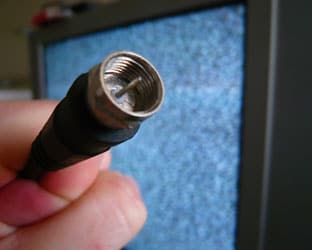 A report on a report from Lazard Capital notes that cable and satellite MVPDs will be able to absorb program cost increases for years to come, and suggests that strategies to minimize the impact need to account for the overwhelming popularity of broadcast television.
A report on a report from Lazard Capital notes that cable and satellite MVPDs will be able to absorb program cost increases for years to come, and suggests that strategies to minimize the impact need to account for the overwhelming popularity of broadcast television.
According to the Lazard study, as reported by Rapid TV News, MVPDs should be able to sustain their current business model through at least the year 2024 while absorbing an 8% annual increase in programming costs.
The report, authored by Brandon Crockett, expects that the cash outlay by MVPDs for programming will still bring in at least a 15% return on investment into the next decade.
Crocket t suggests that the best hope for keeping program costs down is for MVPDs to successfully avoid taking on weaker cable channels through bundling. He said there is likely to be little or no pushback from consumers if MVPDs take that approach.
However, if the MVPDs wish to retain subscribers, they had best make sure they are on good terms with their local broadcast stations – according to the Lazard study, 40% of all subscribers would drop the MVPD service if the broadcast channels are not on the lineup.
The closest basic cable channel to that figure was ESPN at 34%.
The study put ESPN owner Walt Disney forward as an example of the problem with current MVPD pricing models. It makes a lot of money from ESPN, but thanks to bundling, it also makes a lot off channels with very little viewer loyalty. In all, it gets over a quarter of all retransmission fees, amounting to $8.7B, when according to Lazard’s subscriber loyalty analysis it is deserving of a figure more in the range of $2.9B.
RBR-TVBR observation: Here is another piece of evidence that fully supports the broadcast position in the retransmission dispute. Broadcasters, far from being the villains behind rising MVPD subscription prices, are providing the most important programming and are likely still grossly underpaid for it.
If MVPDs are serious about reducing their programming costs, they need to find a way to excise the tagalong channels that are hitch-hiking onto their lineups for a fee far above what their viewership numbers warrant.
To underscore the complexity of this problem, of course, it only takes a moment to realize that Walt Disney is active on both sides of the broadcast/MVPD divide, as are a number of other large media organizations.
But to sum up, when MVPDs whine about broadcast, they are complaining about a mosquito bite while a grizzly bear in the form of basic cable bundlers is gnawing their arm off.
Focus, MVPDs, focus! Broadcast isn’t your problem, it’s one of your best friends, and the sooner you acknowledge that, the better your cost-containment results will be.





